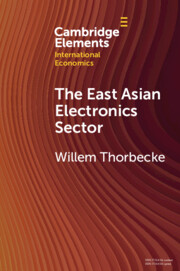Element contents
The East Asian Electronics Sector
Published online by Cambridge University Press: 07 February 2023
Summary
- Type
- Element
- Information
- Online ISBN: 9781009216838Publisher: Cambridge University PressPrint publication: 23 February 2023
References
- 1
- Cited by

